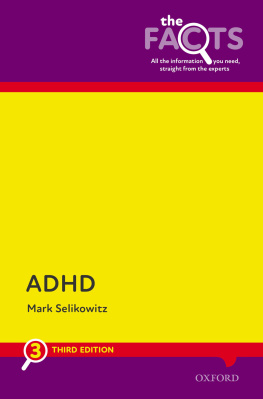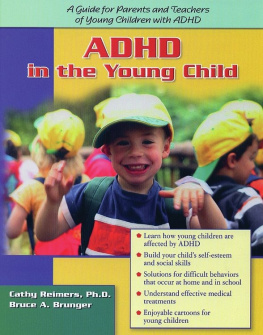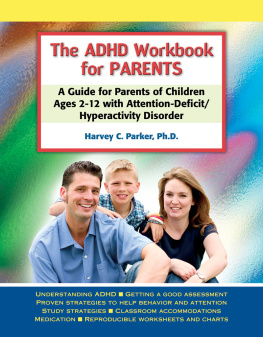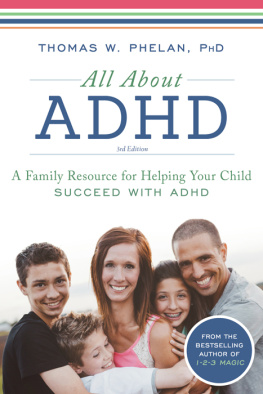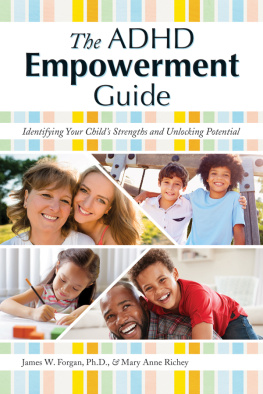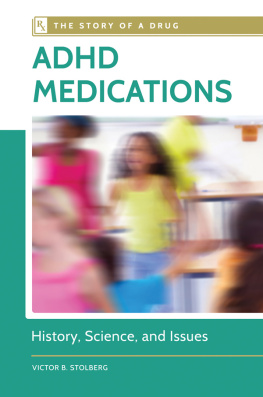Classroom Success
for the LD and ADHD Child
Also by Suzanne Stevens
The LD Child and the ADHD Child:
Ways Parents and Professionals Can Help
Getting the Horse to Drink:
How to Motivate Unmotivated Students

Copyright 1997 by Suzanne H. Stevens
All rights reserved
Printed in the United States of America
The paper in this book meets the guidelines
for permanence and durability of the
Committee on Production Guidelines for
Book Longevity of the Council on Library Resources.
Library of Congress Cataloging-in-Publication Data
Stevens, Suzanne H., 1938
Classroom success for the LD and ADHD child / by Suzanne H. Stevens.
p. cm.
Rev. ed. of: Classroom success for the learning disabled. c1984.
Includes bibliographical references and index.
ISBN 0-89587-159-9 (alk. paper)
1. Learning disabled childrenEducationUnited StatesCase studies. 2. Attention-deficit-disordered childrenEducationUnited States. 3. Slow learning childrenUnited StatesCase studies. 4. Educational changeUnited States. I. Stevens, Suzanne H., 1938 Classroom success for the learning disabled. II. Title.
LC4705.S74 1996
371.926dc21 96-47283
Cover design by Debra Long Hampton and Liza Langrall
Layout design by Liza Langrall
Contents
THROUGHOUT THE 1970S AND 1980S, many states recognized learning disabilities as worthy of attention and services in public schools. Programs were established. Teachers were trained to go a step beyond remedial reading and instruct students who had information-processing problems that made it hard for them to master reading, writing, spelling, and/or math despite the fact that they were bright, healthy, and emotionally stable. Along with their difficulties in learning basic academic skills, almost all of these youngsters had a short attention span, problems with distractibility, and difficulty with concentration. Some were hyperactive; a few were hypoactive. A tiny minority couldnt control their focus of attention at all. Only a handful of these learning-disabled children were girls.
During those years, LD specialists were trained to teach by a variety of methods, almost all of them aimed at reading. A few of the remedial methods focused on the full spectrum of skills involved in dealing with written language. Those approaches usually used multisensory techniques to teach a sequentially organized phonics-based program. In addition to working to develop students decoding skills, they addressed the needs of LD children in the areas of handwriting, spelling, and expressive writing. Amidst much controversy over instructional methods, many teachers used an eclectic approach, with the intention that they would do whatever was necessary. Regardless of their method or their background, very few of those certified to teach LD children had any training in remedial techniques for math.
Over the next twenty years, the trouble learning-disabled youngsters had with concentration and disorganization became more pronounced. When my first book (The Learning-Disabled Child: Ways That Parents Can Help) came out in 1980, very few children were on Ritalin, and of those who were, the majority were classified as LD, with hyperactivity and distractibility considered to be part of the attention problems associated with their learning disability.
Whether children were officially diagnosed and labeled or not, every classroom had one or two students who stood out because of their failure to learn to read, write, and spell. The school behavior of those who had trouble with concentration and organization made it obvious that their attention problems were not the primary cause of their academic difficulties.
A second group of children who had trouble with concentration and organization were termed hyperkinetic. These overactive youngsters were bouncing off the walls and hanging from the rafters. They were out of control, and their behavior was outrageous. Fortunately, there were very few of them. The regular classroom teacher would run into one of these hyperactive children every few years. When she did, she didnt have time to notice if the youngster had a learning problem; she was too busy keeping him from tearing down the building. For this handful of high-energy wildcats, Ritalin and other medications were a godsend. As these unruly little terrors settled down, parents, teachers, and classmates rejoiced. It was assumed that once they gained enough control to sit still and pay attention, they would learn just fine.
In 1980, the term Attention Deficit Hyperactivity Disorder was coined by the Diagnostic and Statistical Manual of Mental Disorders, third edition. At that time, ADD was considered rare. Over the next ten years, many LD children were diagnosed as having an attention deficit disorder in addition to their learning disability. During that period, ADD became increasingly common, and it grew obvious that most of the youngsters given the label had trouble with spelling, math, and expressive writing. Many of them, especially the girls, also had problems with reading comprehension. For some of these students, their academic difficulties were serious enough to warrant an extensive reevaluation and the secondary label of learning disabled. As youngsters identified as having an attention deficit disorder matured, it became increasingly common for further testing to recognize their learning problems as part of a previously unrecognized learning disability. By 1990, experts in the two fields began to realize that researchers who were studying learning disabilities and doctors who were investigating attention deficit disorder were exploring two sides of the same coin.
Thus, for the purposes of this book, the two groups of students will be dealt with together. Whether their primary problem is academic (LD) or behavioral (ADD), both groups need classroom accommodations to help them overcome difficulties with concentration and organization. And both groups need remedial training in spelling, handwriting, and expressive writing.
Both groups also tend to have the strengths and talents associated with the global learners described in the last chapter of this book. Recognition of the special areas of giftedness typically found among LD/ADD students leads quite naturally to speculation about educational alternatives that go far beyond the remediation, modification, and accommodation techniques suggested here.
A few words about terminology and usage are necessary.
There have been a number of variations on the term Attention Deficit Hyperactivity Disorder since it first appeared. The current correct label is Attention-Deficit/Hyperactivity Disorder, abbreviated ADHD. Contrary to proper usage, learning disability and attention deficit disorder will not be capitalized in this book, on the theory that the idea of defectiveness should not be given more emphasis than it deserves.
The term learning disability should not be abbreviated when it is used as a noun. No one has an LD. Instead, it is correct to say, John has a learning disability. Also note that learning disabilities come one per person. A student may have many different learning problems, but taken together they comprise his own personal learning disability. No matter how many problems he has, John does not have learning disabilities. He has a learning disability. These phrases are correct: his learning disability, some learning disabilities, a learning disability, Johns learning disability.
The abbreviation LD may be used as an adjective in describing those with a learning disability, their instructors, and their classes. These phrases are correct: the LD child, the LD teacher, the LD class.
Next page

